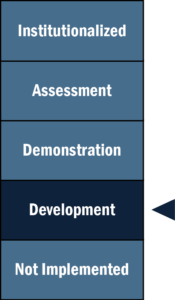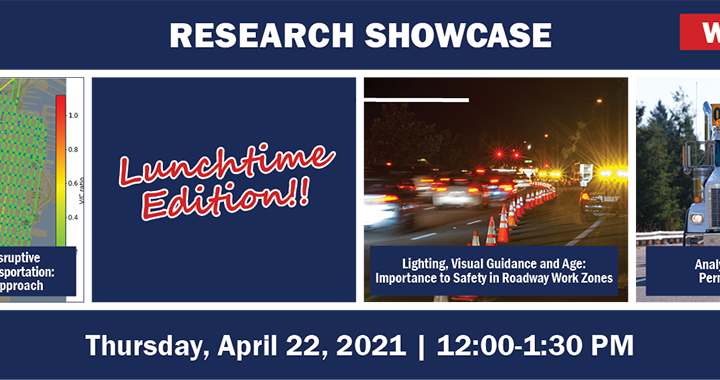What is Nighttime Visibility for Safety?
Improving visibility along corridors, at intersections, and at pedestrian crossings can help reduce nighttime crashes and fatalities. The nighttime fatality rate on the Nation’s roadways is three times higher than the daytime rate, and 76 percent of pedestrian fatalities occur at night. Almost 90 percent of the traffic fatalities in the United States involve intersections, pedestrians and bicyclists, and/or roadway departures. Enhancing nighttime visibility for drivers and other road users will save lives. Several approaches are available that agencies can employ to improve visibility and reduce fatalities.
Enhancing visibility with a targeted application of cost-effective and proven lighting and traffic control device countermeasures can address a large part of the nighttime safety problem. Available tools include proven safety countermeasures and products, such as those championed by FHWA’s Safe Transportation for Every Pedestrian (STEP) and Focus on Reducing Rural Roadway Departures (FoRRRwD) initiatives, as well as updated and new tools for lighting design and application of traffic control devices.
BENEFITS
Implementing measures to enhance nighttime visibility can save lives and, in some cases, reduce energy costs.
Intersections. Nighttime crashes at rural and urban intersections can be reduced by 33 to 38 percent using well-designed lighting. Adequate intersection lighting can help reduce nighttime pedestrian-injury crashes by 42 percent. In addition, light-emitting diode (LED) luminaires use less energy than traditional ones, like high-pressure sodium luminaires, creating cost savings.
Pedestrians and Bicyclists. Crosswalk visibility enhancements for pedestrians such as rectangular rapid flashing beacons (47-percent reduction) or advance markings and signs (25-percent reduction) make it safer for people to cross a road. Many of these countermeasures are also cost-effective and relatively easy to install.
Roadway Departures. Horizontal curve delineation enhancements using chevrons (16- to 25-percent reduction), in-lane pavement markings (35- to 38-percent reduction), or fluorescent sheeting (18-percent reduction) can alert drivers to upcoming curves and can be used individually or in combination with each other or other countermeasures to reduce fatalities.
Learn more about this EDC-7 Innovation.
NJ Advances Nighttime Visibility for Safety
 Stage of Innovation:
Stage of Innovation:
DEVELOPMENT
(April 2024)
The NJDOT Bicycle and Pedestrian Resource Center (Rutgers-VTC and Rowan University) have begun the task of producing a municipal lighting guide oriented toward safety of vulnerable road users, including pedestrians, bicyclists, and any other road users not in a motor vehicle. The team is currently undertaking a literature review of technical manuals, comparable lighting guides, and current streetlight catalogs.
The NJDOT’s Traffic Engineering unit and Structures and Geotechnical unit have recently submitted a second draft for the Traffic Signal Pole and Mast Arm details based on 2015 AASHTO requirements, for NEW signalized intersection installations including Backplates with Retroreflective Tape on Traffic Signal Indications. With assistance from a consultant designer, the two units collaborated to resolve any comments resulting from the preliminary submission. The consultant designer also concurrently coordinated with fabricators to address structural concerns. A basis of design for aluminum standards, which includes standards for various lighting fixtures, is also under review by the Department.
What’s Next?
The NJDOT Bicycle and Pedestrian Resource Center (Rutgers-VTC and Rowan University) will soon shift to communicating the technical information in plain terms. The final guide will provide helpful visual and textual information, recommendations, and examples for municipalities whose in-house expertise on lighting is limited.
NIGHTTIME VISIBILITY FOR SAFETY: NEW AND NOTEWORTHY


